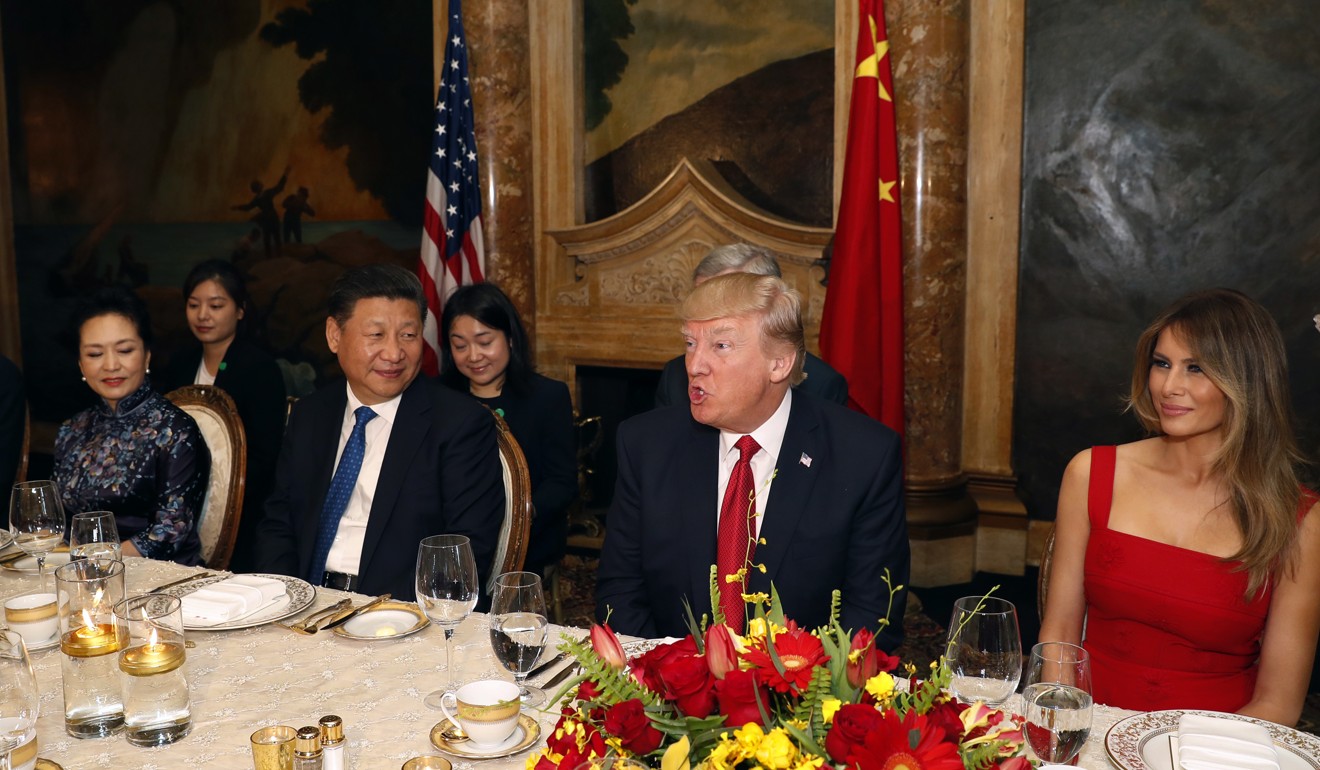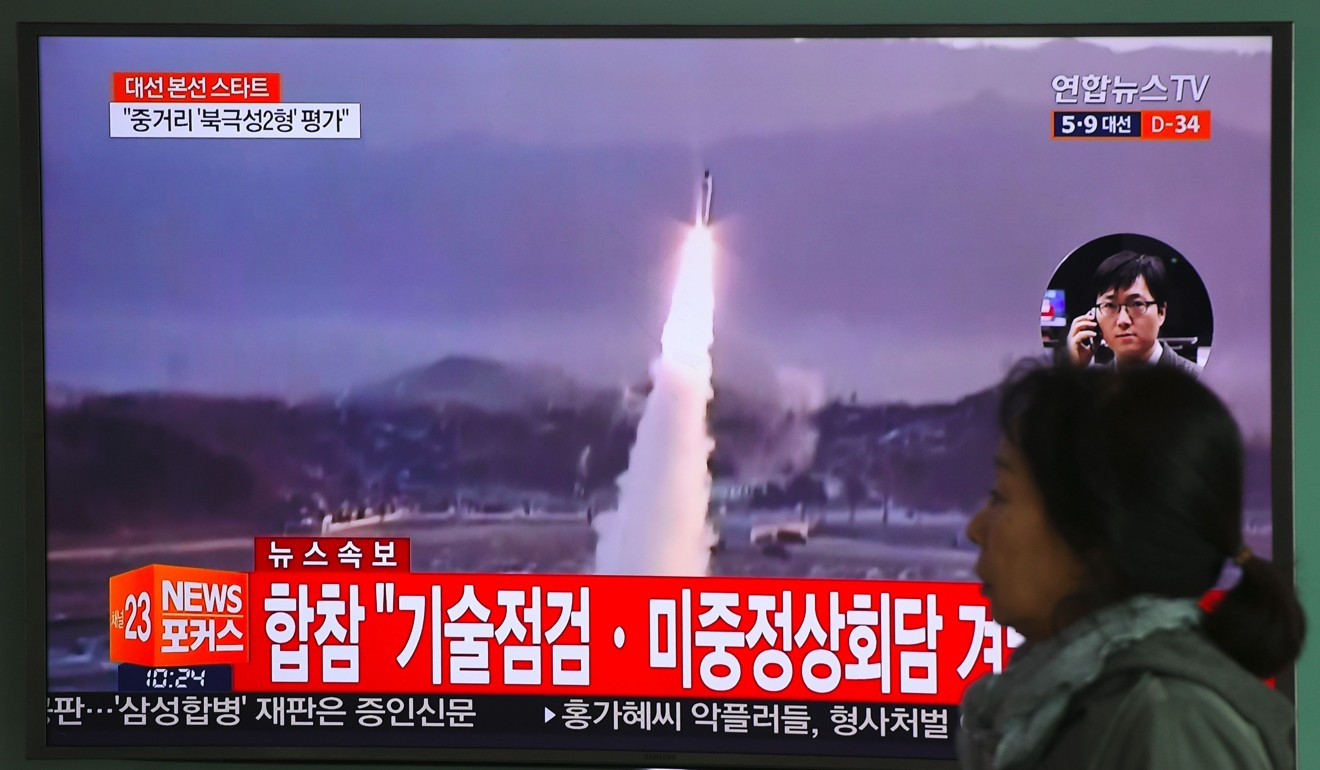
Trump will bring back ‘currency manipulator’ threat, unless China reins in North Korea
Currency issue will be back on the bargaining table, if Beijing fails to deliver on US demands to curb Pyongyang’s nuclear ambitions, US think tank says
China and the United States are likely to lock horns over currency issues again, if Beijing fails to exert more pressure on Pyongyang, according to observers and sources familiar with talks between the two nations.
The two sides are tentatively scheduled to hold high-level discussions on economic and trade issues in Washington by July, wrapping up their 100-day negotiations aimed at fostering more balanced trade and investment relations, the Post has learned.
Talks got under way following the first face-to-face meeting between Chinese President Xi Jinping and his US counterpart, Donald Trump, at Trump’s Mar-a-Lago estate in Florida.
Trump reversed tough rhetoric against China during the summit, saying he had “great chemistry” with Xi and that he understood it is not easy for Beijing to deal with Pyongyang.
The US Treasury Department also did not label China a currency manipulator, as Trump had pledged during his election campaign. Trump defended the decision, suggesting it was a move to entice Beijing’s cooperation on North Korea.

Officials and leaders of the two nations were making phone calls to find ways to stop the reclusive North Korea from conducting nuclear and missile tests.
“But if China cannot deliver on North Korea, the currency issue would come back again,” said Douglas Paal, vice president of the Carnegie Endowment for International Peace, a Washington-based foreign policy think tank.
“Trade war is still possible [after July],” he said. “The biggest challenge [for Trump] is not the trade deficit, it’s low growth.
“If Trump could push the economy to grow more rapidly, he has a better chance to be re-elected.”
Trump is likely to press China to accept so-called “voluntary export restraints” on steel and other overcapacity products, and to increase US exports to China.
This effort could help the US lower its trade deficit with China, which amounted to US$347 billion in 2016, according to the Office of the US Trade Representative.
The White House also seeks reciprocal market access in China for US companies, especially in the agriculture and finance sectors, according to multiple sources with knowledge of the plan.
Scott Kennedy, from the Centre for Strategic and International Studies, said the two nations had already started negotiations and met multiple times.
Kennedy said it was possible for them to come to some type of agreement that would require China to cut production or exports on products in bloated industries, such as steel.
The talks in Washington have been held under the Comprehensive Economic Dialogue, one of four newly established dialogue mechanisms agreed upon at the Mar-a-Lago summit to replace the previous Strategic and Economic Dialogue under the administration of former US President Barack Obama.

The negotiation format of the new dialogue is more results-focused and involves fewer people. Large plenary sessions of the previous Strategic and Economic Dialogue, which could have been attended by up to 700 people, will be cancelled, and negotiations will take place in small groups.
Vice Premier Wang Yang, US Commerce Secretary Wilbur Ross and Treasury Secretary Steven Mnuchin will lead the sides’ teams, respectively.
Other participants will include Chinese Vice Finance Minister Zhu Guangyao and the White House’s National Economic Council director, Gary Cohn. Cohn seems to have gained an upper hand, along with Ross, in the inner circle reportedly embroiled in a power struggle with Stephen Bannon, President Trump’s Chief Strategist.
“For Trump, [the] 100-day [period] is also giving him extra time to solve the political war inside the White House,” Paal said. “Now it’s not clear who is the winner.” The result should be evident by July, he said.

US Trade Representative-designate Robert Lighthizer, President Trump’s chief trade negotiator, would be present in the talks, assuming the full US Senate confirms his appointment in a vote expected soon.
Some negotiations already have begun, in recent weeks. On April 11, a US Congressional delegation visited Beijing and met Chinese Premier Li Keqiang, urging China to open its markets to US beef and to lift an embargo imposed on US beef products after an outbreak of mad-cow disease in 2003.
Li said China is willing to import healthy beef from the US, and China called on the US to lift its import ban on Chinese chicken, the Beijing News reported at the time.
Li had said last year that China had conditionally lifted an import ban on some shipments of US boneless beef and beef on the bone. But the US National Cattlemen’s Beef Association said in March they were still blocked from selling any US beef to China.
“I strongly suspect China will announce that it is accepting US beef in June,” said Derek Scissors, a trade expert and resident scholar at American Enterprise Institute in Washington. “I don’t take the 100 days seriously. Nothing important will happen.”
Diao Daming, a research fellow at the Chinese Academy of Social Sciences in Beijing, said the 100-day plan cannot solve US-China “top-down” framework issues, but it can help settle short-term issues.

